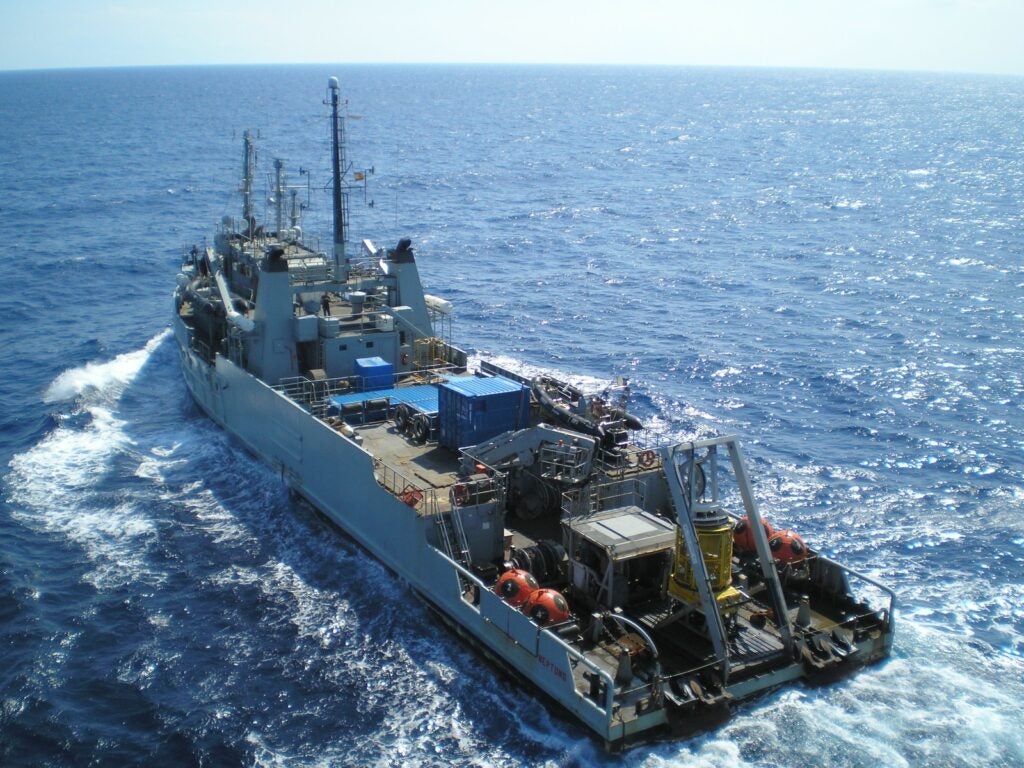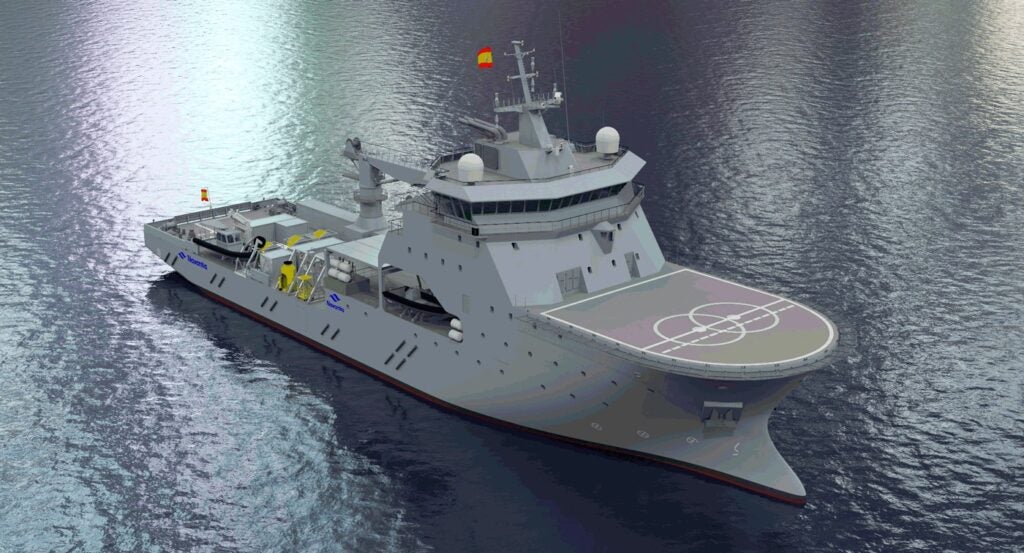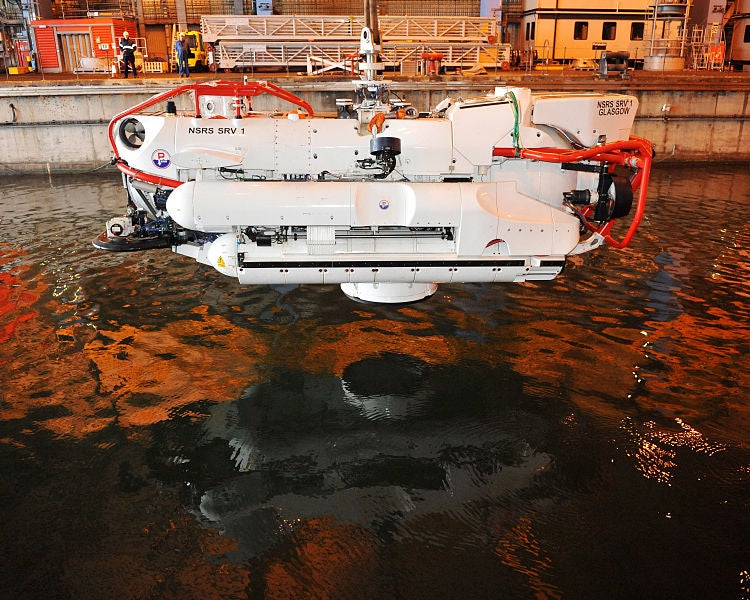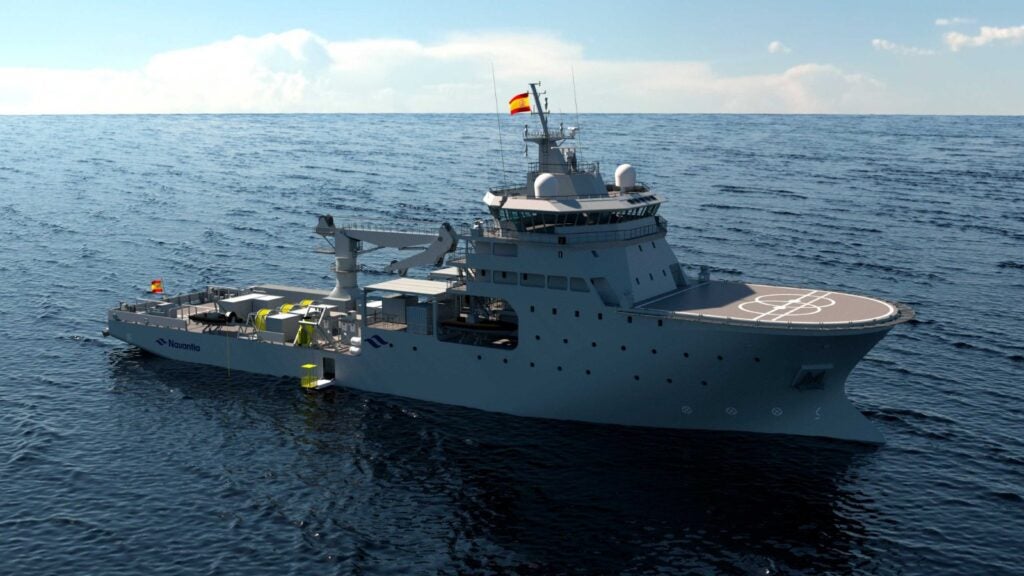Navantia Begins Production Of A BAM-IS For The Spanish Navy And A Patrol Boat For Morocco
The shipyards in Puerto Real and San Fernando of the Spanish shipbuilding company Navantia have begun production of an Underwater Intervention Marine Operations Ship (BAM-IS) for the Spanish Navy and an Offshore Patrol Vessel (OPV) for the Royal Moroccan Navy. In both cases, the procedure consisted of cutting the first plate of a pilot block in order to fine-tune the production systems.
The start of construction on this new submarine rescue vessel is in line with Spain’s S-80 class Plus (or Isaac Peral class) submarine program. The Spanish Navy will commission the first of four S-80 Plus submarines built by Navantia in the coming months. However, the navy does not have a ship capable of rescuing them and their crews in the event of an accident involving these submarines.
The Neptuno (A-20) is the Spanish Navy’s only submarine rescue ship and was launched in 1975, built by the shipyards of Hard Felguera in Gijón. After being purchased by the Spanish Navy, the ship was modified and put into service as a submarine rescue ship in 1988. Despite the fact that the Neptuno (A-20), which has served in the Navy for 35 years, has undergone various modernizations, it is not equipped to provide support and safety to the new S-80 Plus submarines. As a result, BAM-IS aims to meet the demand for S-80 submarines while also providing support and safety for the crew throughout their operational life.

This ship, which the Spanish Maritime History and Culture Institute has given the name Poseidon, is 91 meters long, 19 meters wide, and has a draft of 5.1 meters. It is part of the Buque de Acción Martima (BAM) program of the Spanish General Directorate of Armaments and Materials (DGAM). Owing to the propulsion produced by the Voith Schneider 18GH cycloidal propeller, the ship, which will feature an electric engine, will be able to travel at an economical speed of between 9 and 14 knots and a maximum continuous speed of up to 15 knots. At its top cruising speed, the ship will have a range of 2,400 nautical miles.

The stern of the Poseidon has a large work deck of more than 400 square meters that will allow work modules to be integrated. There is also a helicopter deck in the ship’s bow section. To avoid human activity at great depths or risky dives, the ship will be outfitted with two small underwater vehicles that will be controlled remotely via a tether. Both of these underwater vehicles, known technically as ROVs, will have two articulated arms with different cutting accessories and will be able to connect their ventilation hoses to keep the crew of a submarine perched between 300 and 600 meters on the seafloor alive. Furthermore, this new Navy unit will be able to work with the NATO Submarine Rescue System (NSRS). Among other features, this will allow it to be the first Navy vessel to be certified as a “MOSHIP” to act as a mothership for NATO submarine rescue systems.

There are also hyperbaric chambers, a wet bell, a hydroacoustic positioning system (HPR), single and multibeam echo sounders, towed sonar, an underwater telephone, storage and dive gas refueling, and an emergency supplies delivery system on the ship. The ship is scheduled to be delivered to the Spanish Navy in 2026, following the completion of outfitting activities and sea trials following the ship’s launch near the end of 2024. The construction, which will take three and a half years, will generate 1.3 million hours of work for Navantia.

